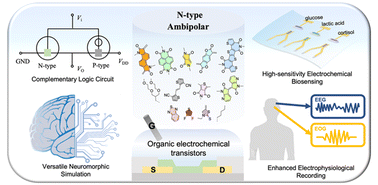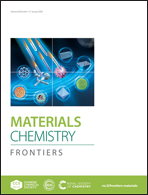Materials design and applications of n-type and ambipolar organic electrochemical transistors
Abstract
Organic electrochemical transistors (OECTs) have high transconductance, low operating voltages, and good biocompatibility. They have emerged as a promising technology for chemo/biosensors, bioelectronics, neuromorphic computing, etc. Compared with the abundant high-performance p-type OECT materials, n-type and ambipolar OECT materials are rare and, more importantly, their performances lag far behind, which largely limited the development of OECT-based logic circuits. The past few years have witnessed the fast development of n-type and ambipolar OECT materials and their applications, thanks to the efforts of novel materials design and device optimization. In this review, we aim to provide an introduction to the working principles of n-type and ambipolar OECTs and survey their recent developments and applications. We will also discuss the challenges and issues that need to be addressed for the future advancement of the field.

- This article is part of the themed collections: 2023 Materials Chemistry Frontiers Review-type Articles and 2023 Materials Chemistry Frontiers HOT articles


 Please wait while we load your content...
Please wait while we load your content...